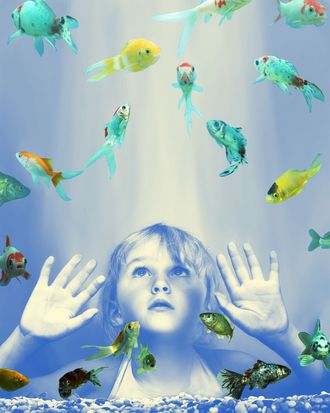
Perhaps one of the most frightening animal studies I have ever come across is this one from 2011 showing that feral pigeons remember the people they encounter. Fellow ornithophobes, you’ll agree with me here — there’s something deeply unsettling about a pigeon burning your face into its tiny bird brain, marking you down as the kind stranger who tossed it a piece of food or the jerk who tried to kick it away.
Unless you’re a scientist who studies facial recognition. In that case, it’s pretty cool — as are the cases of the handful of other non-primate species, including dogs and horses, that have also been shown to recognize specific human faces. Our ability to tell one face from another is a complicated, multifaceted skill — one that researchers believe may be influenced by genetics and personality — and learning how it works in animals can help us better understand how it works in our own brains.
And we may have come one step closer yesterday, when a study published in the journal Scientific Reports reported that some fish, too, can learn to recognize individual human faces.
The study authors taught archerfish — a type best known for its spitting ability — to spit water in the direction of a certain face by rewarding them with pieces of food when they hit the right target (they were trained to look for different targets, to reduce the possibility that they were just picking up on something particularly eye-catching about one face). During training, the fish first learned to pick their target out of a set of two faces, then a set of eight; for the test itself, they had to find the right face out of a pool of 44, with success rates roughly between 65 and 80 percent.
The learning process took some fish a lot longer than it did others, which the study authors believe may be because they relied on different tricks to help them distinguish one face from another. “When it comes to visually identifying an object, not all visual information is created equal,” they wrote. “For example, by learning the combined appearance of the eyes, nose, and mouth of a particular human face, it is likely you will be able to easily identify that face from a large pool of other faces. However, learning the appearance of a single spot on the cheek is not likely to be as helpful.”
Regardless of how they did it, though, the neurobiology of archerfishes makes this especially interesting. All humans have a specific area within our brains to help us process faces: the fusiform gyrus, located within a structure called the neocortex. Most other animals with proven facial-recognition skills also have neocortices — and most are also domesticated species, the study authors noted, meaning they “may … have experienced evolutionary pressure to recognize their human carers.”
Archerfishes, on the other hand, have no such structures. Nor do they care about identifying the right human to scratch their bellies or feed them a treat. More research is needed to determine exactly what’s going on in the fishes’ brains to help them process faces, but in the meantime, this study provides more evidence for the idea that some elements of facial recognition may be learned rather than innate. And that perhaps archerfish and feral pigeons should be kept away from each other, lest the creatures of the sea and sky join forces to punish us for our human misdeeds.




